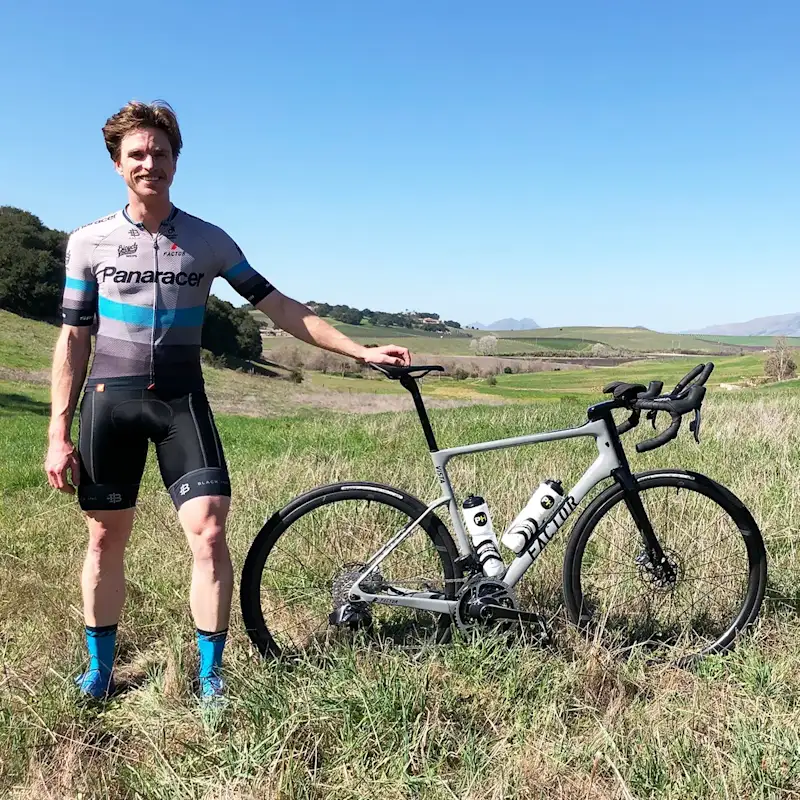
John Borstelmann
The Mid South Gravel Race
John's headline numbers
John's strategy
Fueling
Carbohydrate is the main fuel you burn when racing. Failing to fuel properly is a leading cause of underperformance in longer races.
John ensured he hit a high carb intake without succumbing to ‘flavour fatigue’ by varying the type of products he consumed, including PF 30 Gels, chews, bars and PF Carb & Electrolyte Drink Mix. His carb intake was 44% more per hour than during the very same race the year prior. The general scientific consensus is that increased carbohydrate intake is associated with improved performance (unless impeded by stomach discomfort). So, the higher perceived energy levels he referenced was also likely supporting his physical output on race day.
Hydration
Taking on board an appropriate amount of fluid and sodium is essential to maintaining blood volume and supporting the cardiovascular effort needed to perform on race day.
Whilst the absolute amount of sodium and fluid consumed per hour is important, it’s critical to consider these in relation to each other. This is known as 'relative sodium concentration' and it’s expressed in milligrams per litre (mg/L). How much sodium you’re taking in per litre of fluid is more important than the absolute amount taken in per hour.
Sweat sodium concentration (mg/L) is largely genetically determined and remains relatively stable. Knowing how salty your sweat is enables you to replace a good proportion of your sweat losses, which can range from 200-2,000mg/L.
Given John’s losses are High (1,310mg/L), nailing his hydration strategy remains important, even when it’s Mild.
Learn moreDuring the four and a half hour race, John mainly used PF Carb & Electrolyte Drink Mix and PH 1000 to account for his sodium losses. His fluid intake was ~24% higher than last year’s Mid South race where John’s sweat losses would likely have been lower in the cooler conditions. He also didn’t pee during this race, another indicator of possible dehydration, and reflecting on his strategy he would have liked to start with bigger bottles as he found himself rationing his fluid to last him to the next aid station. Considering his sweat sodium concentration, the average relative sodium concentration of his fluid intake likely replaced a good proportion of his electrolyte losses. However, with temperatures spiking at 28℃ (~82°F), limiting his fluid intake early in the race while maintaining a high sweat rate meant dehydration probably played a key part in his cramping. Therefore, some sweat rate data collection in training would help him determine the correct fluid intake to aim for in these conditions.
Caffeine
Beyond the Three Levers of Performance (carb, sodium and fluid), caffeine is one of only a few substances that is proven to improve performance for most endurance athletes as it can help stave off mental and physical fatigue.
John's intake was slightly above the general guidelines for performance benefits, and would have helped his mental focus and physical performance. With no issues associated with this higher intake of the stimulant, we wouldn’t suggest he changes this part of his strategy.
How John hit his numbers
Here's everything that John ate and drank on the day...
John's weapons of choice
Final thoughts
John's full stats
Data Confidence?
There is an adequate level of accuracy in the data collected and the numbers reported. The athlete manages to recall what they ate and drank including most specifics (brands flavours quantities plausible estimations of volumes). However there are estimations made within the data which affect the overall confidence level in the data reported.